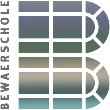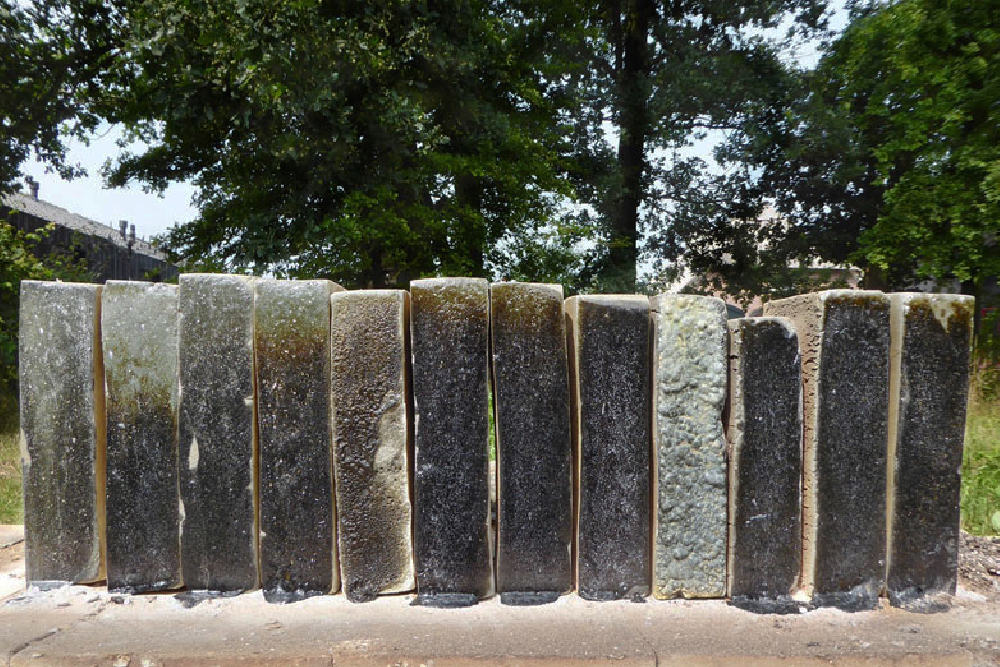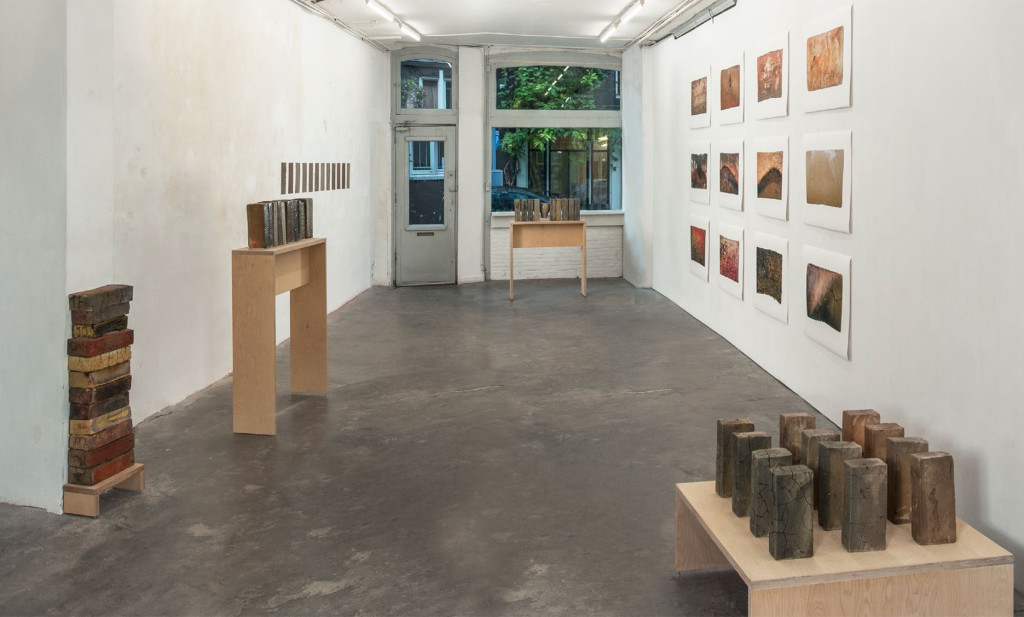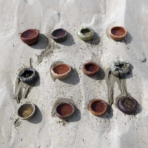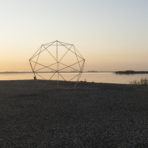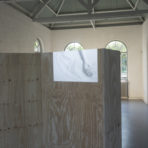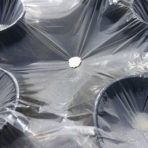Anne Ausloos and Jeroen van Westen
Exhibition: Saturday 29 October to Fryday 23 December 2016, Location Galerie De Witte Voet
Kerkstraat 135 Amsterdam
Opening concert*: Sunday 6 November 3 pm
Gathering clay from the ground underneath their feet, Anne Ausloos (1954, Schoten, Belgium) and Jeroen van Westen (Beverwijk, 1955, Netherlands) have been working on an in-depth research project for the past few years. In 2014–’15 they produced the installation ‘Grenswereld’ (Border world) as their first contribution to the program ‘Balanceren tussen zoet en zout’ (Balancing between fresh and salt) for The Bewaerschole.
The initial question was: where does fresh and salt (water) meet each other? Salt water seepage has always threatened agricultural land and drinking water on the island. Global warming reinforces the problems. For ‘Grenswereld’ Anne and Jeroen decided to start looking for the tipping point, the borderline between fresh and salt. ‘Grondhouding’ (Fundamental), is the title of this second show on the changing balance between Fresh and Salt. A few years ago, whilst walking through Zierikzee, a medieval town on Schouwen, Jeroen pointed Anne at a green glaze on some of the bricks in the walls of 15th-century houses. Literature tells this is likely an incidental result of salt in the peat that fuels the kilns, or in the local clay the bricks are made of. Chance or deliberate? Is there a thin line behind which salt creates this beautiful shiny colors. That is, if it is salt that causes the ‘glaze’. The initial question has become an extended investigation, the artists using multidisciplinary strategies to unearth information about a particular terrain and its culture.
Four distinct elements are important in our collaboration, explain the artists. Firstly, Anne Ausloos’s fascination for detail and need to pay close attention to the materiality of the clay is a kind of starting point. Secondly, Van Westen has a more philosophical approach and sees the wider picture, bringing in history, geography, geology and their relationship to the landscape and what lies beyond the immediate and prosaic. Thirdly, both approaches are, according to the artists, ‘very sensorial’. Ausloos and Van Westen ‘relate to the world through their senses’, they don’t just look and touch but also listen and taste the terrain. Fourthly, they see their approach to the different clays and their in-depth, slow, appreciative research as a form of releasing the intrinsic qualities of a landscape. They produce knowledge, acquired and disseminated through the endless process of observation, creating conditions, intervention, documenting, decision making and discussing the work. Examining what is fundamental is central to their work, as well as the idea that there is always an exchange of values, materials, concepts and ideas. The word ‘fundament’ means a number of things, one of which is ‘an underlying ground, theory, or principle’, as well as ‘a terrain untouched by human hand’; the ideal word to summarise the kind of philosophical/aesthetic activity both artists are engaged in.
The gallery shows not only bricks known as ‘kloostermop’, fired using mediaeval methods, but also photographs of the samples. It is hard to believe that these very detailed, visually arresting prints on Hahnemühle artists’ paper are not actual objects. Photographed in a ‘scientific way’, printed on one metre wide paper, each image is ‘a portrait of an individual landscape’. Fire brings out invisible particular qualities of the clay, of which the brick will bear witness for centuries. This fascinating exhibition shows many research artefacts and transformations. Visiting is like physically and mentally entering a geological horizont. The answer to the initial question remains tantalisingly unanswered but here, we see the process and the relics of both artists’s urge for ‘Diepgang’ (in depth).
© Siobhan Wall and Jeroen van Westen, 2016
*Composer Koos de Muinck wrote ‘Diepgang’ using the sounds of a dry brick in salt water as recorded by Jeroen and Anne, a piece for vibraphone (Niek Kleinjan) and accordeon (Ellen Zijm). ‘Diepgang’ is a second piece written by Koos especially for Anne and Jeroen’s research. ‘Grenswereld’ was the first, fresh and salt water sounds, on land and under water, plus base clarinet (Pedro Guridi).
For more information about Anne Ausloos, please visit www.anneausloos.be
For more information about Jeroen van Westen, please visit www.jeroenvanwesten.nl
www.galeriedewittevoet.nl or contact info@galeriedewittevoet.nl
Open hours Galerie De Witte Voet Kerkstraat 135 Amsterdam : Thursday through Saturday noon–6 pm, first Sunday monthly 2–5 pm, or by advance appointment o20 6558412
